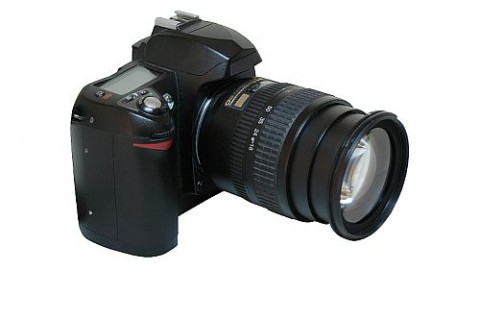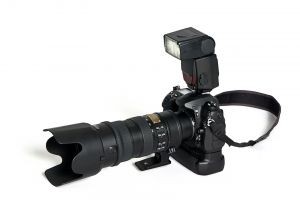How to select D-SLR digital camera?
The first thing to think about when you want to buy a digital SLR camera is what types of photos you want to take. So what do you want a digital SLR camera for - holidays, family events, kids sports shots or are you a professional or hobby photographer working on the streets, taking landscapes, specializing in weddings?
If this is your first D-SLR camera you may be tempted to set yourself a budget and stick to it. Professional photographers will look at the camera's system rather than price - flash, lenses, accessories, power, etc. A professional photographer or hobbyist will look at buying a camera as a long-term investment.
Everyone has different needs for a camera so here are some things to consider when buying a D-SLR:
- How are you going to use the camera? For taking photos of fast moving subjects? What sort of environment will it be used in - dark, dusty, damp places?
- Do you have some great lenses you had with your 35 mm SLR? Most of these can be used if you buy a D-SLR from the same manufacturer.
- Why buy a digital SLR instead of an advanced compact digital camera?
- What features and functions do you need, and how accessible should they be?
- Are you willing to edit your images?
D-SLR digital camera
Types of Cameras
There are three different types of digital cameras for those looking to buy a D-SLR - entry-levels models for those who like taking snapshots, enthusiast models for those who take the hobby of photography seriously and professional models for photographers who make a living as professional photographers.
D-SLRs in the Entry-level Range
D-SLRs in the entry-level range are designed for the everyday, family or snap happy photographer. They are made from a polycarbonate material and are lighter and smaller than the digital cameras in other categories.
These cameras are logically configured and easy to use and some have help screens and illustrated modes that are Auto settings; and popup flashes are a standard feature on all models. Picture resolution varies from 6 megapixels to 12 megapixels - and so does the price.
D-SLRs for the Enthusiast Photographer
The D-SLR cameras for the enthusiast photographer are mid range between the entry level and professional digital cameras. Most of these cameras have between 10 megapixel and 14 megapixel sensors, and the camera bodies are made from a durable alloy but some parts may be polycarbonate.
These digital cameras offer settings that you can adjust but it may not have the full range of features of the professional models. Most cameras at this level are sold in kits with one or two lenses.
D-SLRs for the Professional Photographer
Professional digital SLR cameras are bigger and bulkier than other cameras in this range, and their price reflects their professional level.
These cameras are built for everyday use all day, seven days a week. They are built from durable materials such as magnesium alloy for durability and toughness. They are well engineered and are well sealed against dust and moisture entering their internal workings.
The shutter speed on a professional D-SLR is normally rated for 300,000 cycles and offers much higher shooting rates than other cameras. Professional D-SLRs can capture more shots continuously on a shooting burst.
Professionals digital SLRs will be fully adjustable and will not have a popup flash. They will be fully compatible with all good flash units that can be attached to your D-SLR when you need extra lighting.
Professional D-SLR Camera Kit
Match the Camera to the User
While these categories may make it obvious what camera is suited to whom - it is not that easy. Here are some further things to think about when you want to select a DSLR camera:
1. First D-SLR Camera. Buying your first D-SLR camera can be quite daunting. You may be upgrading from a compact digital or a 35 mm camera and have some knowledge of photography. An entry-level D-SLR would be ideal for photographers as there are preset mode settings to help them capture their shots.
2. Family Photographs. People taking family photos will also find the entry-level D-SLR will suit them with their twin lenses and preset Auto modes. This setup gives them the flexibility to take sports action shots as well as family portraits.
3. Enthusiast Photographers. If you are a keen hobby photographer you will likely to have a high level of knowledge. You may want to upgrade your old camera with a higher resolution one from the same manufacturer so you can use the lenses you already have.
4. Outdoor Photography. If you are a keen outdoor photographer then you need a camera that combines lightweight durability with good moisture and dust protection. Depending on the environments you are photographing in, either the D-SLR for the enthusiast or the professional will be suitable.
5. New Professional Photographers. New professional photographers are likely to go for either the mid range or professional camera. They are only learning their craft and will need a good, durable, high performance camera.
6. Professional Photographers. Professional photographers want a high performance, reliable workhorse that can handle any type of photo shoot in any environment so they will buy a professional D-SLR. Professional photographers make their living from their craft and need the best equipment available to satisfy their customers.
Now you are we'll-equipped to go out and buy a D-SLR to meet your photography needs.




